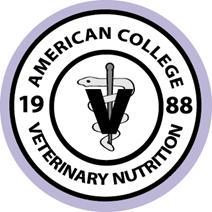There are some key differences between the pet foods you find at the grocery store and those sold through specialty pet supply stores, but it’s probably not what you’re thinking. You can find high quality foods at the grocery stores just as you can find poor quality (terrible really) foods sold at specialty pet supply stores. As I’ve said before price doesn’t always equate to quality when it comes to pet food. “Premium” refers to the price pet owners are willing to pay, and not necessarily the quality of the food.
Different distribution channels (the industry term for the way products get to the marketplace) exist because people attach an emotional value to where they shop. Those who buy their pet food from a specialty boutique wouldn’t dream of grabbing a quick bag at the grocery store, and those who buy whatever pet food is on sale during their weekly grocery run think that spending the extra time and money at the pet super store is a waste. Companies will target different distribution channels for different types of pet food shoppers. This same marketing phenomenon holds true for clothing, coffee, and even our own foods, so pet food is not unique in this.

Who really decides what food you buy?
The best way to select a food is not by where it is sold but by considering the needs of your dog or cat, as well as your family life style and budget constraints. Paying more for pet food doesn’t mean you love your dog or cat any more, just as spending less doesn’t mean you treat them like any less of family member. The reality in my household is that my cats don’t really care where their food comes from as long as it is in the bowl on a regular basis. And for our dogs, any food was cause for a celebratory butt waggle.

Raider’s best “feed me” face.
Other than the market trappings, what are the real differences between brands sold through grocery stores and pet supply stores? It largely comes down to cost of raw materials and how they impact the formulas, ratio of plant to animal proteins, and digestibility of the overall diet.
Formulas: Does the food have a specific ingredient list, or has the company built-in ingredient flexibility? Most grocery or discount retail store brands will use what I consider “open” formulas. Meaning that they list things like “meat”, “poultry”, and “by-products” instead of “beef”, “chicken” or “pork liver”. Check out my post on ingredients if you’d like to learn more about these differences, but in general using broad ingredient definitions allows manufacturers to substitute nutritionally similar ingredients (like chicken for turkey) without having to change the label, get approval from the FDA-Center for Veterinary Medicine first, or having to pay more money for an ingredient that is in limited supply. The nutrient profile of the finished product will be the same no matter the specific ingredients used, but having an “open” formula will lower manufacturing costs, which in turn lowers the cost of the finished diet to the consumer. This is not good or bad for the general population, it just is. Some dogs and cats do very well on varied diets, but for those with food intolerances or allergies this inherent variety can be problematic. Though even with over-the-counter pet foods and treats using specific named ingredients, undeclared ingredients can still show up. Technically, pet food companies that name specific ingredients are required by law to follow the same formula and ingredient list with every batch, which will drive manufacturing costs up when ingredients are in short supply since substitutions are not legally allowed.
Ratio of Plant to Animal Proteins: The reality is that animal proteins are expensive, as anyone who shops for the family groceries will tell you. Just compare the cost of a pound of beef to that of a pound of rice. A pet food that uses a combination of plant and animal proteins to balance the essential amino acid profile will be less expensive to produce than a food that uses primarily animal proteins. Again, less cost to manufacture typically means less cost to the pet owner. Dogs are omnivores and can thrive on a variety of different balanced foods from all meat to all vegetarian and every combination thereof. Cats on the other hand are carnivores and while they can do well on balanced diets that include small amounts of carbohydrates and plant proteins, they tend to do best on higher amounts of animal protein.
Digestibility: Digestibility just means how much of what you feed actually gets incorporated into the dog or cat vs. coming out as poop. For commercially-prepared dry and canned foods, digestibility tends to be lowest for grocery store brands (around 75-80% digestible), moderate for “premium” priced brands (consistently 80%), and highest for foods sold through veterinary offices (closer to 85% digestible). Fresh food ingredients are even more digestible still (over 90%), but this can vary depending on ingredients and cooking technique. There are exceptions to every rule, but these can be used as general guidelines. Digestibility is affected by the quality and processing of the raw materials (animal- and plant-based), the presence of other ingredients (especially fiber), and the processing and cooking of the combined diet (heat and pressure cooking). Unfortunately there is no way of knowing the quality of the ingredients and digestibility of the diet just by reading the label. This comes from knowing the manufacturers and having experience with the diet. Even a diet labeled as having undergone “AAFCO feeding trials” may be less digestible than one that bares a “formulated to meet the needs” label since “increased volume of stool” and “excess gas production” are not grounds for failing a feeding trial. Sometimes lower digestibility can be a good thing, like a dog that need to eat a higher fiber diet to maintain intestinal health, but can also be an issue if you live in a fifth floor walk-up. And it’s the middle of winter.

Too many choices! And that is just a small fraction of the whole store.
So what do you need to know?
If your otherwise healthy dog or cat has a sensitive gastrointestinal track and is a frequent vomiter/breaks with diarrhea if they sniff the wrong food (and has been seen by your vet to ensure that nothing else is wrong), then buying a brand that has a proven higher digestibility or even a veterinary therapeutic brand may be a necessary. On the other hand, if your dog or cat is an easy keeper and can eat any type or brand of food without incident, then you have more shopping flexibility. You and your pup may enjoy taking a trip to the pet supply store together to buy food, or maybe you are pressed for time (or money) on a regular basis and in that case buying dog or cat food at the grocery store is perfectly acceptable. I pass no judgment about where caregivers buy their food. My loyalty is to my patients, not the store owners.
You know your companion dog or cat better than the clerk at the store or even your friends at the dog park. My criteria for finding the right brand are simple. If your dog or cat is eating a balanced diet; is looking good and feeling good; the food in question is safe for the whole family (no unpasteurized raw meat, please); and the manufacturer is invested in ensuring the health and wellness of companion dogs and cats (as opposed to making a quick profit) then feed away!

Annabelle willing you to get up and fill the bowl.
Happy Feeding!
Lisa P. Weeth, DVM, MRCVS, DACVN











